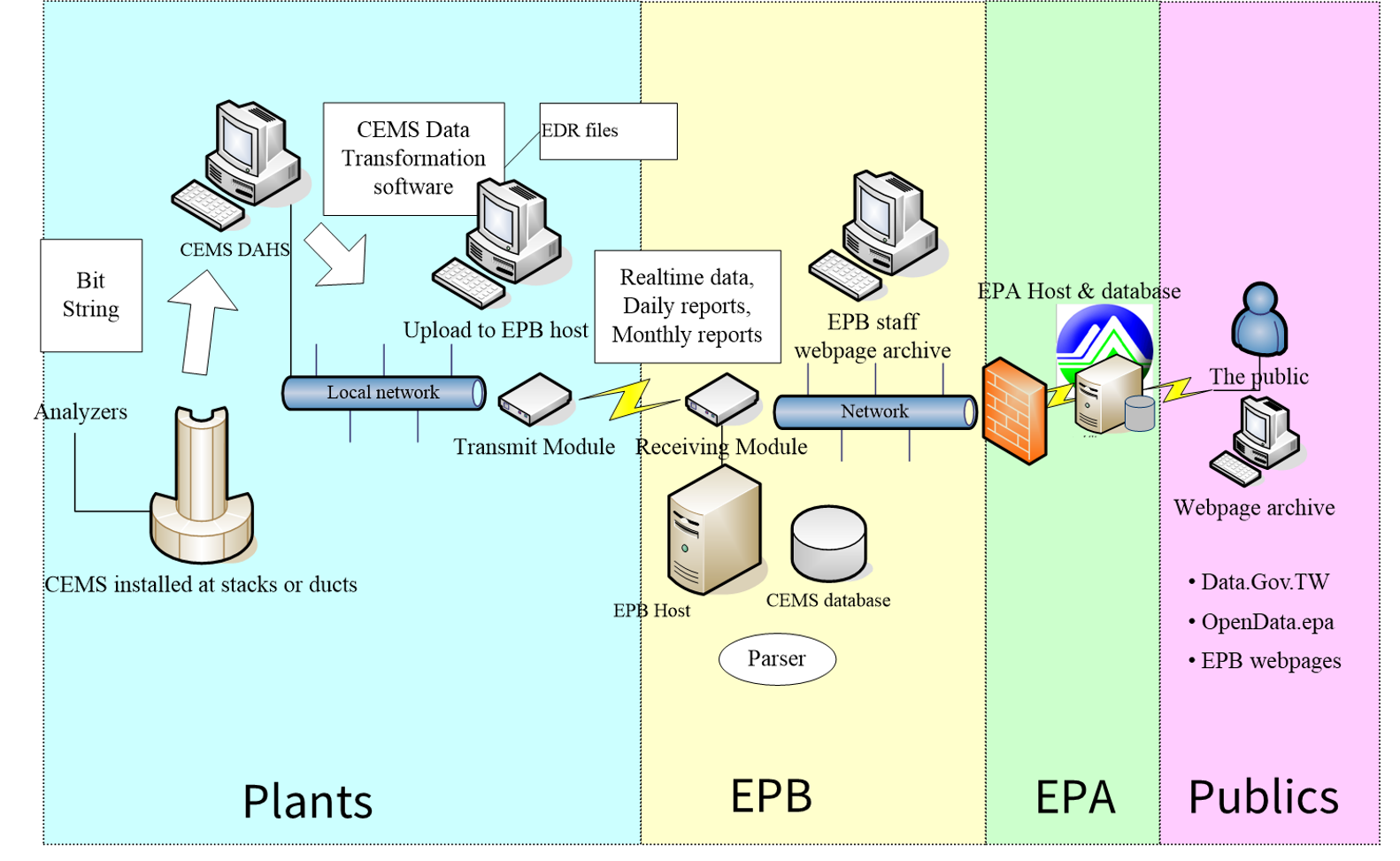Continuous emission monitoring system(CEMS) can continuously monitor stationary source discharge pipelines in real time to grasp the air pollutant discharge situation, and can be used in public and private places to timely respond to and eliminate the abnormal situation of air pollution control equipment to avoid large-scale emissions caused by uncontrolled subsequent processes the situation of air pollutants occurs. At the same time, public and private places should be regulated to transmit pollution sources and monitor the operation status of facilities, so that the competent authorities can grasp the current situation.
In order to strengthen the CEMS management system and make the pollution source control and monitoring management system more complete, Taiwan MOENV continuously improve the quality and reliability of monitoring data, strengthen inspection and control measures, and implement a full-time monitoring requirements. On the April 12, 2019 and April 8, 2020, the " Measures for the Management of Facilities for Continuous Emission Monitoring System of Air Pollutants from Stationary Sources " were amended and promulgated, respectively. The focus of the amendments includes the newly added Data acquisition and handling system (DAHS) for archive, audit, and verification systems. The sources which CEMS monitoring data is falsified should be reviewed by a third-party of certification organizations or academics every 2 years. The keeping period of CEMS data and relevant records are intended from 2 years to 6 years. Parallel signal comparison measures and original data transmission also have been added. The monitoring items are increased for different emission inventories. The quarterly percentage of monitoring data availability are tightened from 85% to 95%. To strengthen the overall monitoring and control capacity, we also add more monitoring data status codes, data calculation principles and data transmission formats in this amended CEMS regulation.
Since 1982, Taiwan MOENV has successively announced 5 batches of "The continuous emission monitoring system should be set up and connected to the competent authority in public and private places of the stationary sources ". All industries that meet the conditions of the announcement, such as boilers, waste incinerators, cement industry, the steel smelting industry, petrochemical industry, pulp industry, flare and those who have promised according to the Environmental Impact Assessment are all subject to management. At present, there are nearly 400 exhaust pipes and 113 flares in total, which will control about 73% of sulfur oxide (SOx) and nitrogen oxide (NOx) emissions from stationary sources nationwide.
 The figure shows CEMS monitoring data information disclosure flow chart. The public information includes the 6-minute monitoring record value of the opacity of particulate matter, the 15-minute monitoring record value of gaseous pollutants, and the 1-hour average value of gaseous pollutants. It is divided into 3 data sets to facilitate the public to browse the CEMS monitoring data.
The figure shows CEMS monitoring data information disclosure flow chart. The public information includes the 6-minute monitoring record value of the opacity of particulate matter, the 15-minute monitoring record value of gaseous pollutants, and the 1-hour average value of gaseous pollutants. It is divided into 3 data sets to facilitate the public to browse the CEMS monitoring data.